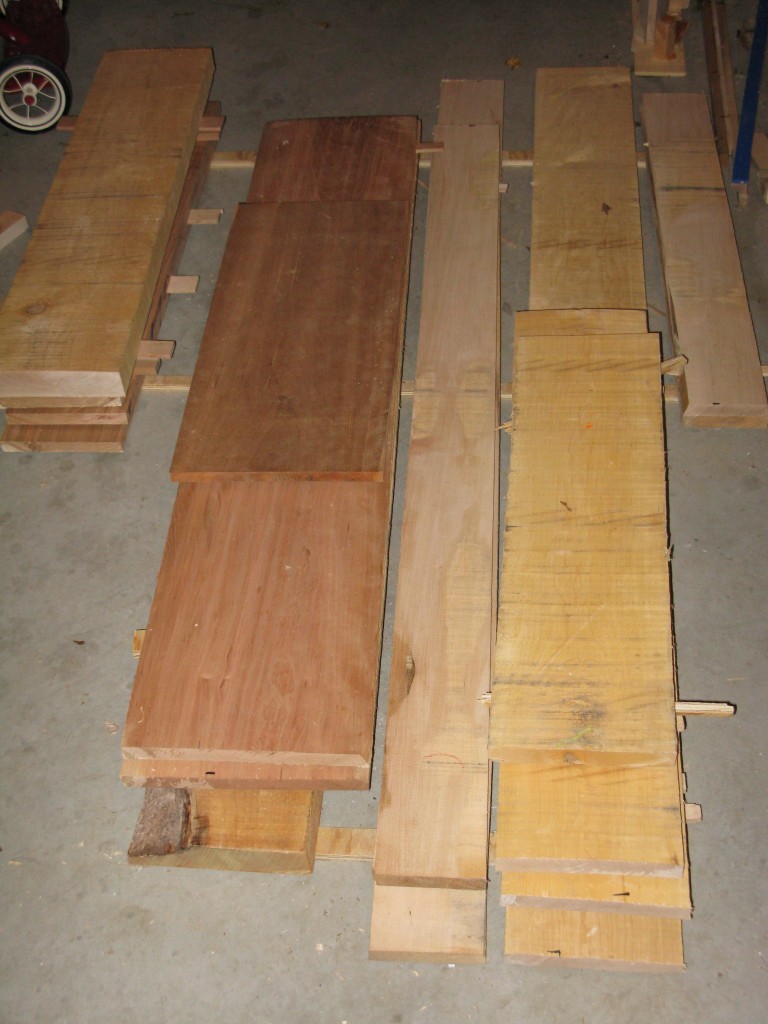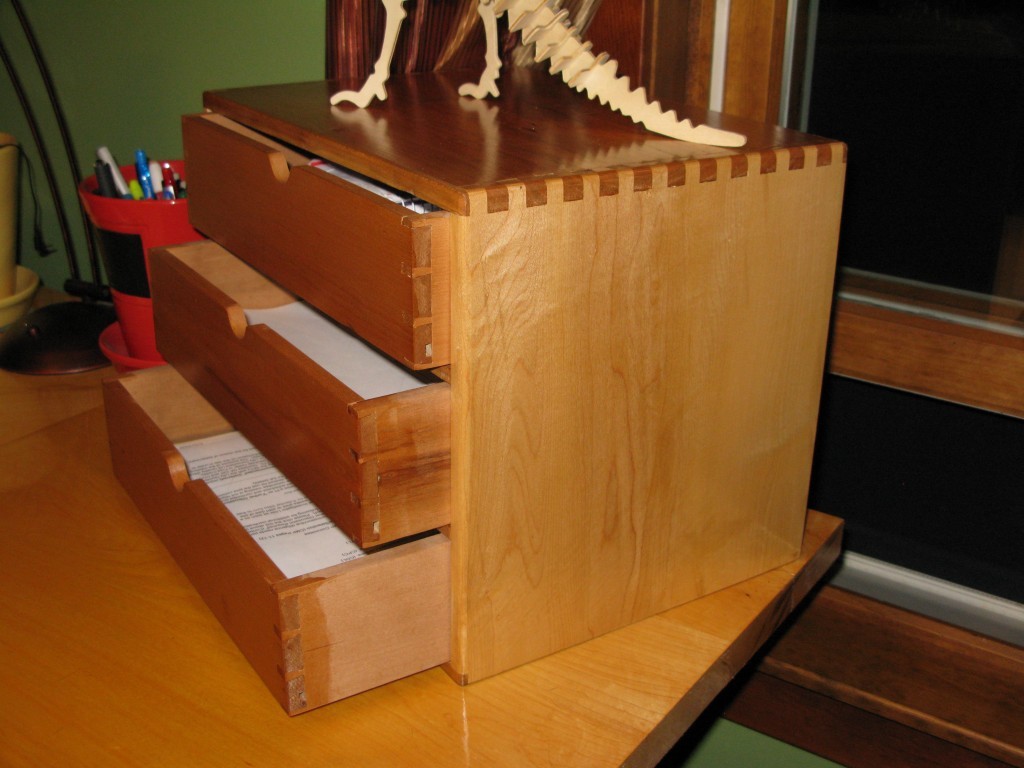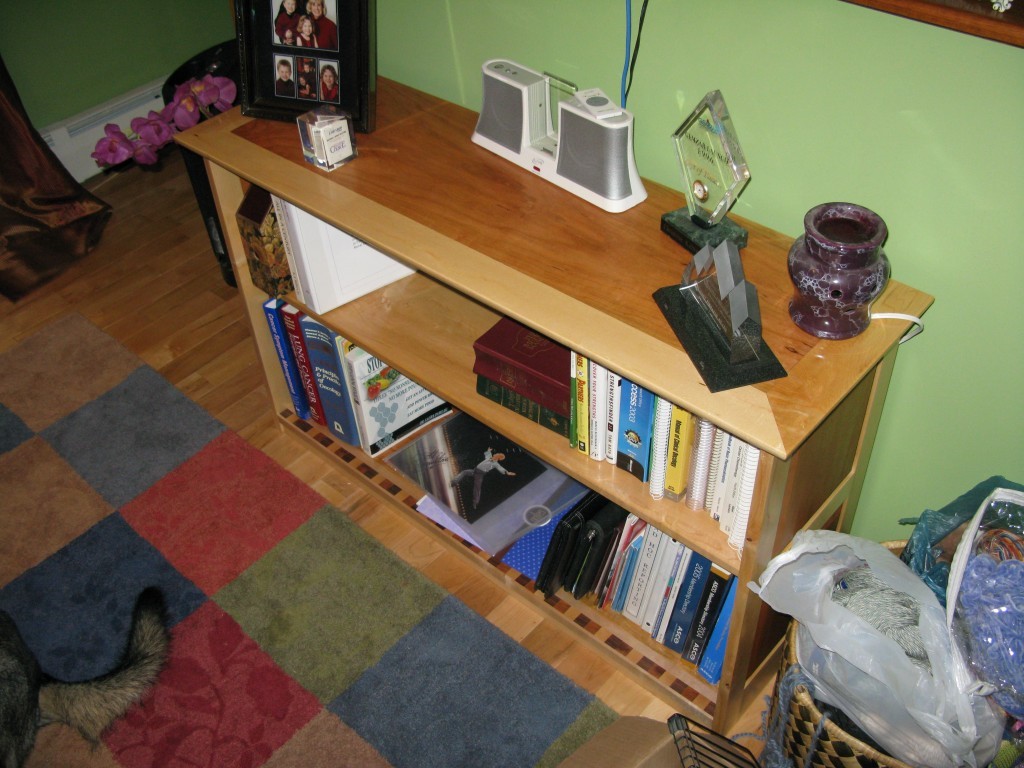
Believe it or not, that pile of wood is going to be an armoire. Well, that’s not completely correct- I actually need to get more before all is said and done. Mainly the cherry. Hopefully I won’t need anymore maple. I’ll need some plywood as well so I can close up the back.
But still, can you see it? Those pieces of cherry on the left are the 3 drawer fronts. The wider maple boards on the right are the drawer boxes. The 8/4 maple will be the posts. The 12″ wide pieces of cherry will be the panels for the sides of the armoire. The narrower pieces of maple are the stretchers between the drawers and rails on the sides.
The details are what always get me in these projects. The bigger the project, the more important the details. Typically I draw complete plans prior to buying the wood. That way I have an idea of what width boards I need as well as what lengths I can cut them to so that I can get them into a vehicle. (Most boards that are roughcut are 10’+ in length. They’ll let you cut them, but you have to buy the whole board.) I’ve already been bitten by details in this project. Since I didn’t know the details regarding lengths, some of the boards that are cut are an inch or two short.
Of course, I had my reasons for doing it this way. Having plans is no guarantee against mistakes either. At least, not for me. Many of my plans that I’ve done have had flaws in them for one reason or another. Those flaws don’t become apparent until I get to a point in the project where they do become apparent.
In this particular case, I saw the cherry board and new it was the drawer fronts for the armoire. I wanted to maximize the usage of the boards but I couldn’t tell for sure what the dimensions would end up being. Thus, I had to guess at lengths for the maple, but I was a little off. In particular, I didn’t allow extra length for the tenons on the ends of the wood that is to become the stretcher. Bummer. Still, I should be able to make it work.
At this point, I’ve got the drawer fronts sized and I’ve cut the four posts for the lower portion of the armoire. I’m making it as an upper cabinet portion and a lower dresser. The top of the dresser will serve as the bottom for the cabinet. I’ll pin the front posts of the cabinet into the top of the dresser for alignment, but this will allow the dresser top to move without stressing the cabinet. I don’t have all the details figured out For instance, I’m still trying to decide if the door frames will be maple or cherry. I’m leaning towards cherry, thus making them all cherry doors, but I’m not completely decided. Also, the top of the cabinet is a bit murky. Will I mill some cornice? or put some kind of crown up there? The biggest question mark is the interior of the cabinet. I want to put more than just some shelves in there. But I’m not sure of anything beyond that.
There’s plenty more to come on this project. I’m looking forward to it.


